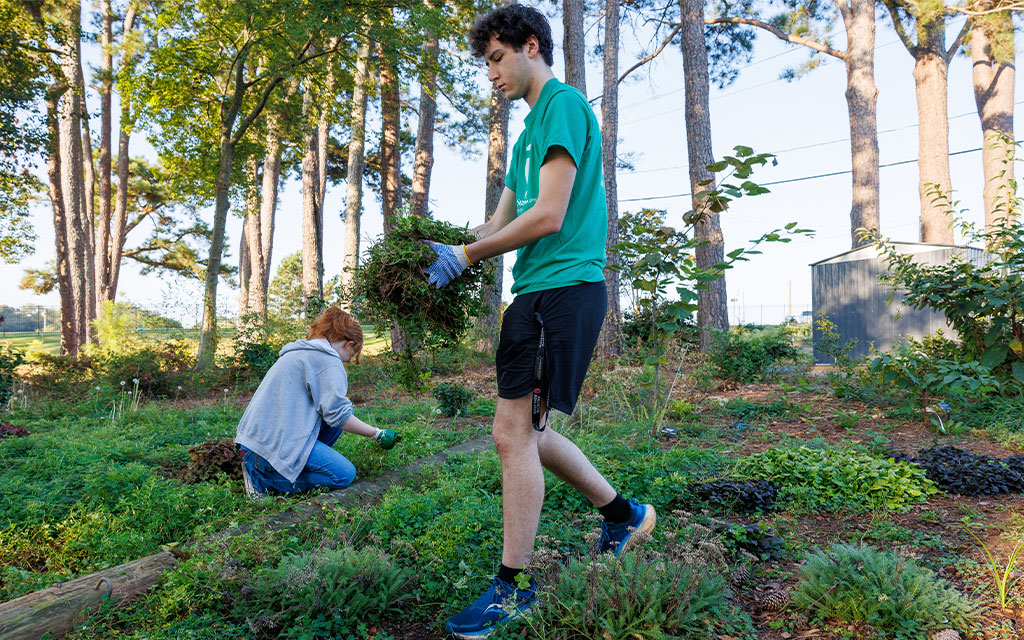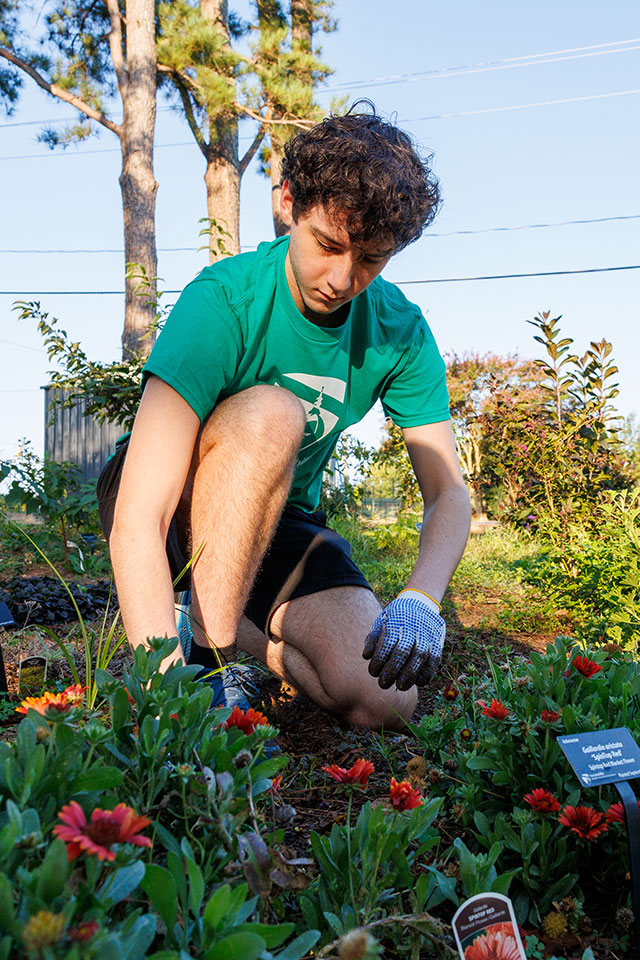Following a summer of harvesting, the university community is now getting a taste of the fruits of its new food forest, while students are learning about urban forestry and sustainability.
On Earth Day this past spring, the ribbon was cut on the food forest and since, more than 120 pounds have been harvested between May and August, according to Amanda Karls, director of institutional effectiveness and compliance, who coordinates Upstate’s sustainability initiatives.
In the spring semester, Karls said students in English 102 classes helped with seed planting to start the vegetables. Many of the items were harvested throughout the peak growing season in summer.

On an early Friday morning, students enrolled in a University 101 course were getting hands-on and discovering what helps the roughly 2 acres of fruits and vegetables thrive, says Karls. Through service-learning courses like U101, students focus on skills like critical thinking, including problem solving and analyzing data through examples like studying pollinator counts, she added.
Hayden Knox, a freshman criminal justice major in the course, shared the opportunity has helped her connect more deeply with life at Upstate. Hayden emphasized the importance of sustainability and how University 101 is giving her the chance to experience it firsthand.
Nate Bruce, a freshman computer science major, shared service learning experiences like working in the food forest help students better understand the impact of sustainability and our role in protecting the environment.
“We want to keep the environment as diverse as possible, and we want to take care of the plants and animals living here on earth,” Bruce said.

Through what’s been gathered, the food forest is beginning to serve its purpose.
“Urban forestry is something the SC Forestry Commission and NRCS (Natural Resources Conservation Service) are putting as one of their main priorities moving forward,” Karls said. “We have to figure out ways to get fresh produce in our urban communities, and a food forest is a good example of using the space you have to plant a lot of plants in a small area.”
She noted there are seven layers of a food forest—from roots, ground cover, vines, shrubs and trees—all allowing for more harvest through companion planting.
So far, the produce has been distributed to the campus community, including the Spartan Pantry. Once the supply is larger, the goal is to also help emergency food hubs in the community.
The project began last September through grants from the SC Forestry Commission and the NRCS, which helped with funding to purchase the planter boxes and the more than 400 plants in the food forest, according to Karls.
Some of the produce planted includes pineapple guava, kiwi, figs, over six different species of honey berries, and even a unique plant called “ketchup and fries.” The latter plant involves potatoes growing in the ground and tomatoes growing above ground.
“We’re trying things that aren’t traditionally found in a backyard,” Karls said. “We want people to be able to taste new things.”
—This story was written with contributions from Gracie Sudduth, ’26
